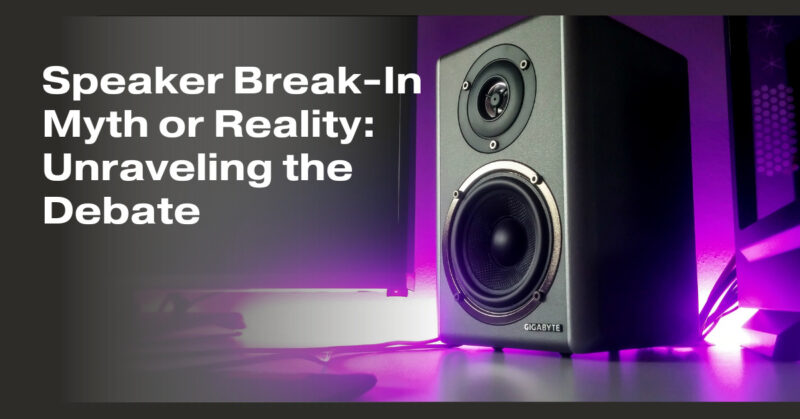The concept of speaker break-in, also known as “speaker burn-in” or “speaker run-in,” has been a topic of discussion and debate among audiophiles and audio enthusiasts for decades. Some claim that allowing speakers to “break in” by playing them for an extended period improves their sound quality, while others consider it a myth. In this article, we’ll delve into the speaker break-in debate to uncover the facts and dispel the misconceptions.
What Is Speaker Break-In?
Speaker break-in refers to the idea that new speakers require a period of use to reach their optimal sound quality. Advocates of this concept argue that the mechanical components of speakers, such as the driver diaphragms and suspensions, need to loosen up and adjust over time to sound their best. This process is often likened to breaking in a new pair of shoes.
The Arguments for Speaker Break-In:
- Loosening of Suspensions: Supporters of speaker break-in assert that the mechanical suspensions (surrounds and spider) of speaker drivers gradually become more flexible with use, allowing for improved bass response and overall sound quality.
- Driver Alignment: It is argued that drivers may slightly change their alignment during use, optimizing their performance and reducing distortion.
- Resonance Reduction: Some suggest that the diaphragms and other components may undergo microscopic changes, reducing internal resonances that can color the sound.
The Skeptics’ View:
- Measurement Data: Critics point to measurement data that shows little to no significant change in speaker performance after extended use. Controlled tests have often failed to provide empirical evidence supporting the benefits of speaker break-in.
- Manufacturers’ Statements: Many speaker manufacturers claim that their products are designed to perform optimally right out of the box. They often argue against the need for extended break-in periods.
- Placebo Effect: Some argue that perceived improvements in sound quality attributed to speaker break-in may be the result of listener bias or a placebo effect, where individuals believe they hear a difference because they expect to.
What the Experts Say:
The opinions of experts in the audio industry vary. Some acoustic engineers and designers believe in the concept of speaker break-in to a limited extent, acknowledging that minor changes in suspension behavior may occur. However, they emphasize that any significant changes in sound quality should be scrutinized and tested scientifically.
Practical Considerations:
While the debate over speaker break-in continues, here are some practical considerations:
- Follow Manufacturer Guidance: Manufacturers often provide guidelines for speaker usage. Following their recommendations can help ensure optimal performance.
- Trust Your Ears: Regardless of the debate, your ears are the ultimate judge of sound quality. If you perceive a positive change in sound after extended use, it may be worth it for your listening enjoyment.
- Room Acoustics: The acoustics of your listening room have a substantial impact on sound quality. Addressing room acoustics through proper treatment and placement can often yield more noticeable improvements than speaker break-in.
In conclusion, the debate over speaker break-in remains a topic of contention within the audio community. While some listeners swear by the practice, others remain skeptical. Ultimately, whether you choose to allow your speakers to break in or not, the most important factor in achieving the best sound quality is a combination of proper speaker selection, placement, and room acoustics, along with your personal listening preferences.


